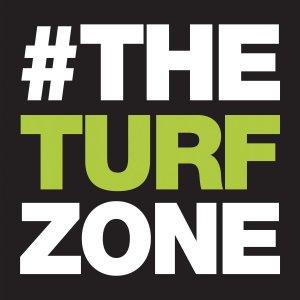The Turf Zone Podcast

Maryland Turfgrass Council – Cicadas!!
MTC Turf News – Vernon Cooper, Maryland Turfgrass Council Executive Director
We thought 2020 was tough, well it looks like we have another monster in 2021. However, this attack won’t kill us, but instead will attack our young trees, shrubs and turf. The monster of which I speak is referred to as the “17-year locusts” even though they really are not locusts, they are CICADAS!!
There are two types of Cicadas found in the Eastern United States:
* The “dog-day” or “annual cicadas” actually are on a 2- to 3-year cycle with some appearing each summer.
* The other is the “periodical cicada” or the “17-year locust.” The periodical cicadas have various clans or “Broods” which mature at different times. In Maryland we have “Brood X” and “Brood II.” Brood X will emerge in 2021, while Brood II was here in 2013 and will return in 2030.
The epicenter of the Brood X emergence is to be Central MD. You can expect not to see thousands or even millions, prepare to see GAZILLIONS per acre with each one ranging from between 1 to 2 inches. Several weeks before emergence some nymphs construct “mud chimneys” 2–3 inches high and 1–2 inches wide over a ½ inch hole. The resulting soil or turf will closely resemble an area heavily core aerated. This usually does not kill the turf but will result in an unsightly mess, especially on low mowed turf such as golf greens or lawn bowling or other athletic fields. The brood will begin emerging early May with the largest concentration being the last two weeks of May and the first two weeks of June.
Cicadas will NOT bite or sting adults, children or pets. In fact, pets may try to eat them. A few is not a problem, but there are so many they will quickly overfill their stomachs and get sick. The biggest nuisance to humans if the intense noise. Basically, the cycle is:
* Nymphs come out of the soil, leaving holes and tunnels.
* They start climbing vertically and molt the hard exterior skeleton.
* Once they have their wings, the males go to the top of trees and start singing to attract females.
* Once they mate, the males die and the females use an ovipositor to slice into the very young bark of young trees and shrubs to lay her eggs.
* The young branches with multiple slits for eggs may break or die back from the damage. On mature trees and shrubs this looks like a bunch of dead tips and usually does not permanently affect the tree or shrub.
* However, eggs being laid into young trees or shrubs may actually kill the plant as the eggs hatch and the process starts again as they fall to the ground and dig in for the next 17 years.
What does this mean for us as a Turf & Landscape Industry?
* We have to be prepared to correct or manage a rougher playing surface.
* If at all possible, we need to postpone planting of young trees and shrubs until fall. Cicadas will lay eggs on over 200 different species of trees, and insecticides are not effective to control these monsters. Instead, utilize annual flowers and plants to get through the spring and summer.
* If planting MUST occur (or planting of young trees and shrubs took place last fall), totally encase the tree or shrub in fine, 1-cm mesh available at the Garden Supply Center or even from Fabric and Sewing Centers. For further information contact the University of Maryland Home & Garden Center or your local Maryland Extension Service.






 Visit Podcast Website
Visit Podcast Website RSS Podcast Feed
RSS Podcast Feed Subscribe
Subscribe
 Add to MyCast
Add to MyCast